Harra Sea Forest: Iran's Mangrove Wonderland
Harra Sea Forest, known locally as the Mangrove Forest of Qeshm, is a unique natural wonder situated in the northwestern part of Qeshm Island, Iran. This extraordinary forest spans approximately 200 square kilometers and is one of Iran's eight internationally protected areas.
If you are a nature lover or adventure enthusiast, this UNESCO Biosphere Reserve is a must-see attraction for you. Join us to learn everything you need to know about the breathtaking Harra Sea Forest including its location, best time to visit and things to do there.
About Harra Sea Forest
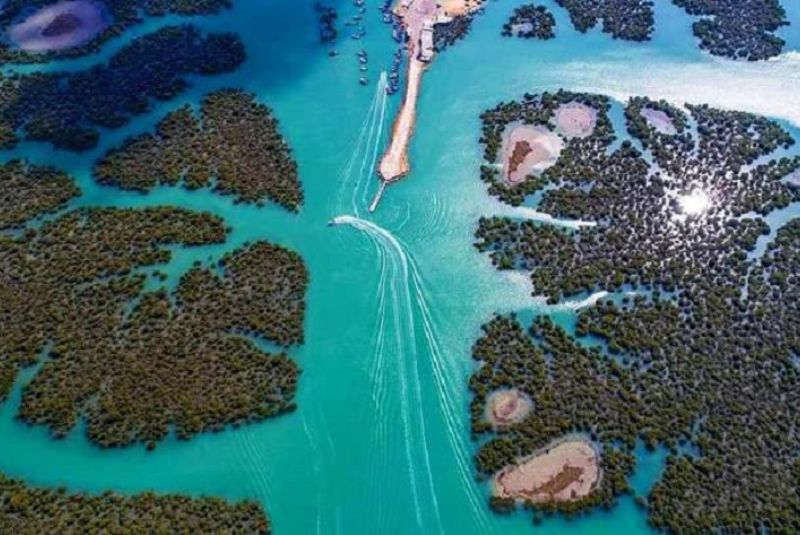
The Harra Forest, also known as the Mangrove Forest, is one of the most remarkable natural attractions on Qeshm Island, Iran. This unique ecosystem is often referred to as a marine forest due to its growth in the intertidal zone of the Persian Gulf.
As you navigate through the waters of this forest, you'll witness verdant trees that appear to have sprouted amidst a dense mass of wood. Interestingly, these are actually the roots of the trees, reaching towards the sky and thriving by converting the salty seawater into fresh water. This ability has allowed these trees to endure in this environment for many years.
The Harra Forest primarily consists of the Harra (Avicennia marina) and Chandal (Rhizophora) trees. These trees exhibit a fascinating behavior; during low tide, they emerge from the water, while high tide submerges them halfway. The tropical climate of the region further supports the robust growth of these mangroves.
Ecological Importance
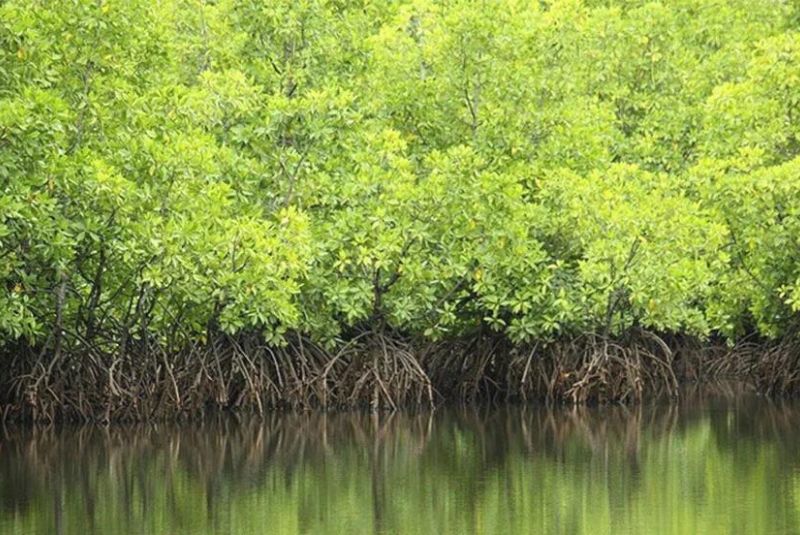
In 1972, the Harra Forest, covering an area of 82,360 hectares, was designated as the "Harra Protected Area". By 1975, its area expanded to 85,686 hectares, earning the status of a national park. In 1977, it was included in UNESCO’s World Network of Biosphere Reserves. Today, it is protected by the Department of Environment of Hormozgan Province.
The Harra Forest provides an ideal ecological setting, making it a vital habitat for migratory birds from tropical regions, such as the Great Egret, Indian Pond Heron, Spoonbill, Sandpiper, and Grey Plover.
Additionally, the forest is home to various species of birds, aquatic animals, amphibians, including sea snakes, fish, and turtles. Remarkably, 80% of the aquatic species in the Persian Gulf spawn in this area.
Historical Significance
Locally, the Harra trees have been used for various purposes, from traditional medicine to boat building. Historically, the forest has been a source of livelihood for the indigenous people.
Local Folklore
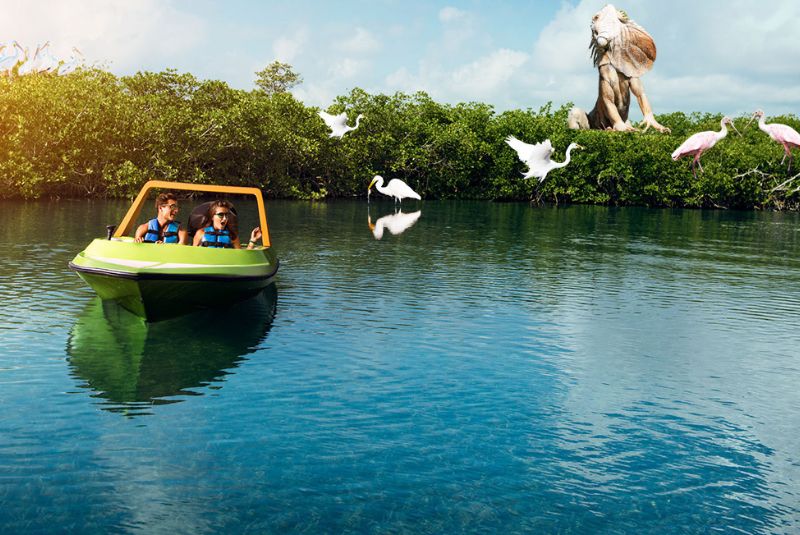
The Harra Sea Forest is steeped in local folklore and cultural significance. According to legend, the trees of the Harra Forest are believed to have grown from the tears of a mythical figure. Another tale suggests that the seeds of these mangroves were brought to the region by sailors from India.
Features of the Mangroves in Harra Sea Forest
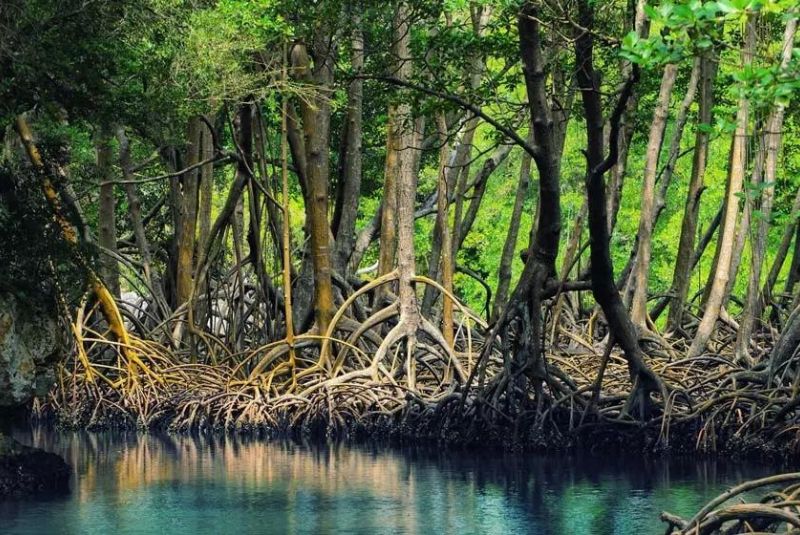
Harra trees, with their bright green leaves and heights ranging from three to six meters, are halophytes (salt-tolerant plants). Their bark has a unique filtering capability, allowing them to absorb fresh water and expel salt, effectively functioning as natural desalination plants. These trees are evergreen and bloom with yellow flowers in June, adding to their visual appeal.
The seeds of Harra trees germinate while still on the parent tree. Once they detach, they embed themselves in the mud around the tree, giving rise to new saplings. This method of propagation has led to the development of these extensive and beautiful forests.
The leaves of Harra trees are narrow and oval-shaped, and their almond-shaped fruits ripen in summer, eventually falling into the water to take root in the coastal soil. The Chandal trees, on the other hand, display white or yellow flowers in winter, and their brown, pear-shaped fruits mature in spring.
Over millions of years, these mangrove forests have adapted remarkably well to tidal and saline conditions, making them some of the most resilient plant species. The Harra plant features short roots with numerous upward-growing secondary roots that typically reach up to 30 centimeters.
Functions of the Mangroves
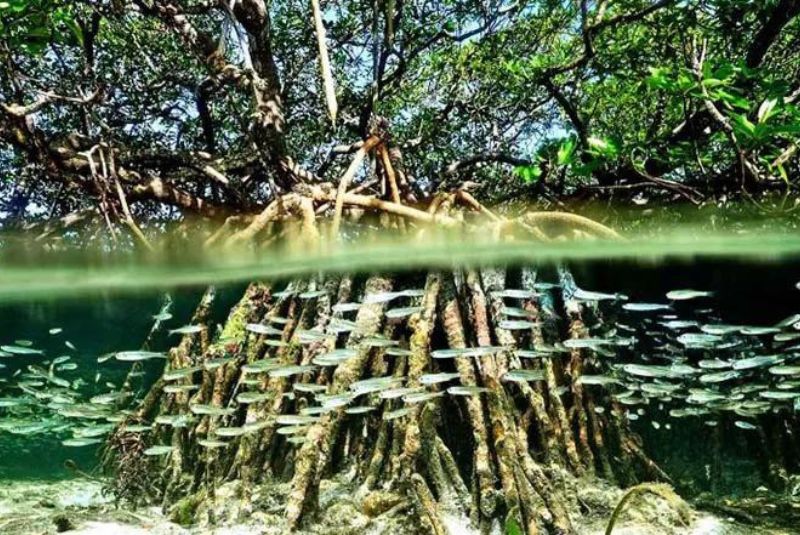
The Harra Forest extends beyond Qeshm Island, reaching around Bandar Pohl, Bandar Khamir, and Hormuz Island. During high tide, local inhabitants often visit these forests for fishing or pruning tree branches. Pruning not only aids in the growth of the trees but also provides the locals with materials for personal use or sale.
The Harra trees serve multiple purposes. They are crucial for livestock feed, charcoal production, timber, and paper pulp. Additionally, the sap from these trees is known to be beneficial in treating common skin conditions prevalent in Hormozgan. Due to their long lifespan and sturdy trunks, Harra wood was historically used to construct the first musical instruments, like the drum (daff), on Qeshm Island.
The roots of Harra trees act as natural barriers against sea waves, providing protection during storms and high tides. Unlike other woods, the Harra wood produces minimal black smoke when burned, making it an excellent choice for charcoal production.
Furthermore, the fruit and leaves of these trees have medicinal properties. The mangrove roots, functioning as natural defenses against sea waves and storms, highlight their ecological significance.
The mud of the Harra Forest, rich in salt and lime, was traditionally used by locals for weight loss. They would apply the mud to their bodies, let it dry, and then wash it off in the water, utilizing its natural properties for health benefits.
The Flora of Harra Sea Forest
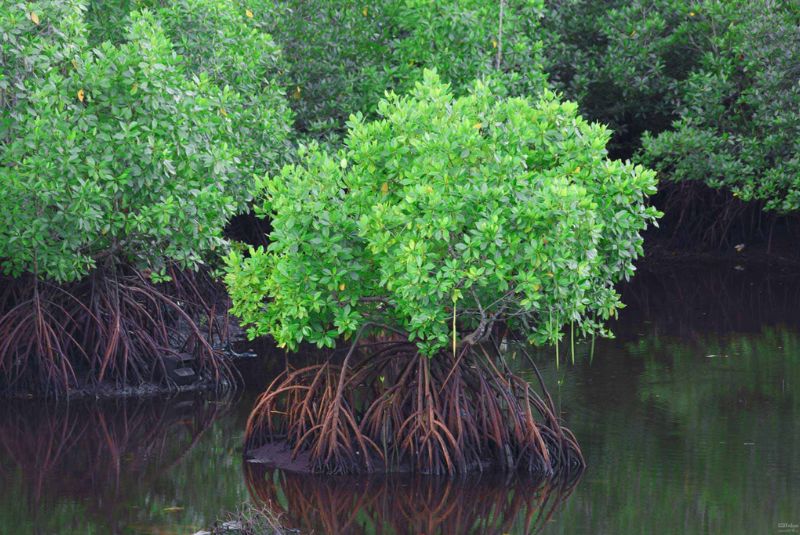
The dominant species in Harra Sea Forest is Avicennia marina. These trees possess remarkable adaptations that allow them to thrive in salty conditions. Their leaves excrete excess salt, and their complex root systems, often visible above the water, facilitate gas exchange in oxygen-poor soils. These roots also play a crucial role in preventing soil erosion and creating a stable environment for other plants and animals.
Wildlife of the Harra Sea Forest
One of the most captivating aspects of the Harra Sea Forest is its rich birdlife. The forest is a haven for birdwatchers, hosting species such as the great egret, Indian pond heron, and various types of gulls and terns. During the migratory season, the forest becomes a temporary home for an array of birds, making it a dynamic and vibrant ecosystem.
In addition to birds, the forest supports a range of aquatic life, including different species of fish, crabs, mollusks and amphibians. Notably, the mudskipper, a unique fish that can live both in and out of water, thrives here. The presence of sea snakes and turtles further highlights the forest's role as a vital ecological sanctuary.
Harra Sea Forest Fishing

Fishing in the Harra Sea Forest has been a way of life for the local communities for centuries. The shallow waters and rich biodiversity make it an ideal fishing ground. Traditional methods, such as using nets and traps, are still prevalent, providing a sustainable way to harvest the forest's marine resources without harming the delicate ecosystem.
In recent years, modern fishing techniques have also been introduced. However, there is a growing emphasis on sustainable practices to ensure that the forest remains a viable habitat for future generations. Efforts are being made to balance the needs of the local fishing communities with the imperative of environmental conservation.
Harra Sea Forest Location
The Harra Sea Forest is nestled between Qeshm Island and Bandar Khamir, in the Strait of Khorasan. This lush mangrove forest is accessible only by boat, making the journey itself an adventurous prelude to the enchanting sights that await. The forest is part of a larger mangrove ecosystem that stretches across various parts of southern Iran, including Bandar Laft and Bandar Khamir.
Best Time to Visit Harra Forest
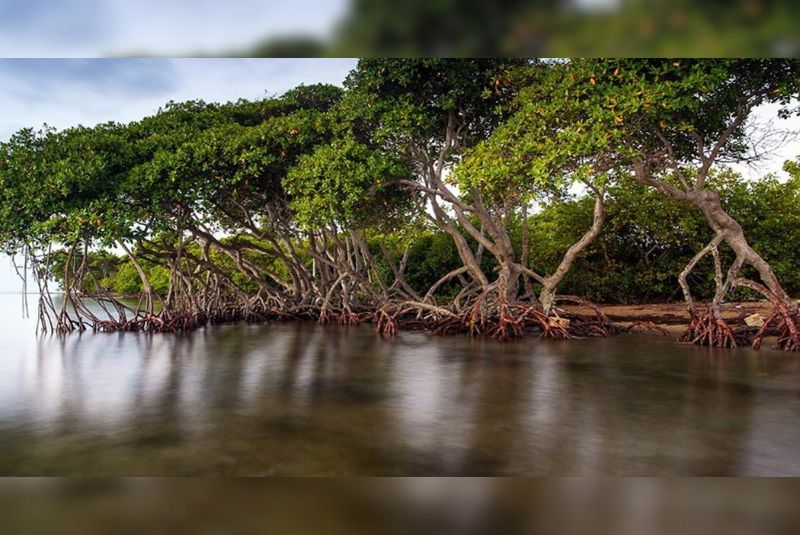
The ideal time to visit Harra Sea Forest is during the cooler months, from late autumn to early spring, when the weather is mild and pleasant. During these periods, the weather is pleasant, and the likelihood of encountering diverse wildlife is higher.
How to get to Harra Sea Forest
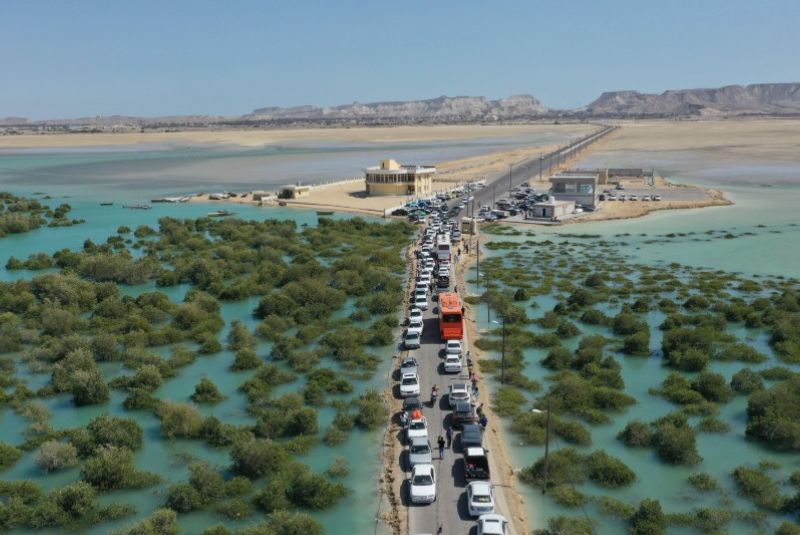
The forest is accessible via boat tours that typically depart from Qeshm Island or Bandar Khamir. These tours are often led by experienced local guides who provide insights into the forest's ecology and the traditional lifestyles of the communities that depend on it.
What to See and Do in Harra Sea Forest
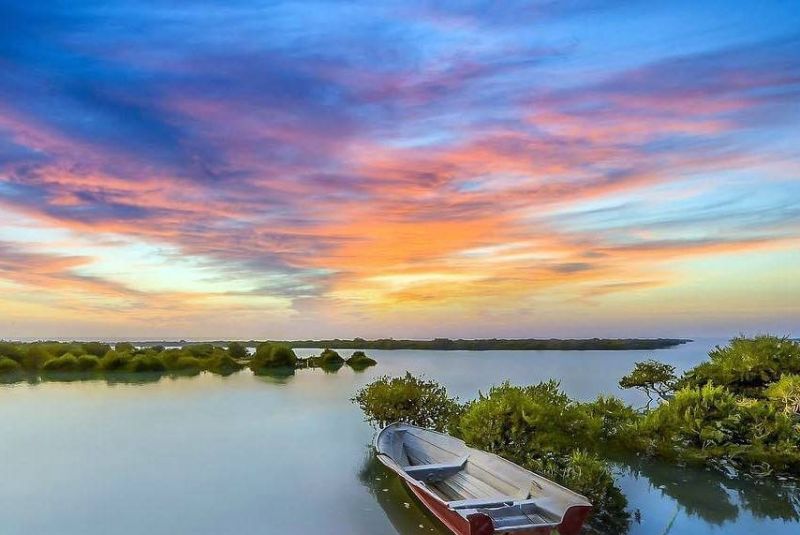
A visit to Harra Sea Forest is a mesmerizing experience. As you navigate the narrow waterways, you'll be surrounded by dense mangroves, their roots dipping into the water and creating a labyrinth of natural tunnels.
The serene environment, punctuated by the calls of birds and the gentle lapping of water, offers a peaceful escape from the hustle and bustle of modern life. You can also do activities including:
- Boating and Photography: Visitors can embark on guided boat tours through the forest's water channels. These tours offer a unique perspective of the mangroves and the opportunity to capture stunning photographs of the landscape and wildlife.
- Birdwatching: Bird enthusiasts will find the Harra Sea Forest an ideal spot for observing both resident and migratory bird species. Early morning and late afternoon are the best times for birdwatching when the birds are most active.
- Fishing: For those interested in fishing, the Harra Sea Forest provides a unique experience. Local fishermen often venture into the mangroves during high tide to catch various fish species that inhabit these waters.
Besides these, you can visit nearby villages and learn about the traditional uses of mangroves and the lifestyle of the local people.
Bottom Line
The Harra Sea Forest on Qeshm Island is a natural treasure that offers visitors a unique glimpse into the intricate beauty of mangrove ecosystems. Its ecological significance, diverse wildlife, and cultural heritage make it a must-visit destination for nature lovers and eco-tourists alike.
By visiting the Harra Sea Forest, travelers not only witness a stunning natural landscape but also contribute to the ongoing efforts to preserve this invaluable part of Iran's natural heritage.
Share your story!
Comment below and let us know about your Experience.
Your story inspires others!


Comment
Leave a Comment